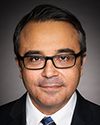Thank you, Mr. Chair, and thank you to the members of the committee for the opportunity to speak with you about the COVID-19 pandemic and the actions that Canada can take to ensure that people everywhere are able to access the medical care they need.
By way of introduction, I am the humanitarian affairs adviser for Doctors Without Borders, or Médecins Sans Frontières, MSF, based here in Ottawa. I'm also a respiratory therapist with clinical and public health experience across Canada and internationally. I have a Ph.D. in population health and have worked as a clinical scientist in Canadian hospitals and universities.
MSF is an international medical humanitarian organization that provides impartial medical assistance to people in more than 70 countries. We deliver essential health services in some of the world's most complex environments to people affected by conflict, epidemics, natural disasters, and other emergencies.
Today we are facing an unprecedented crisis, created both directly and indirectly by the COVID-19 pandemic, which has reached all of the countries where MSF works. In these places, the pandemic amplifies and deepens existing inequalities. MSF sees this on the front line every day. We are witnessing COVID-19 cases that are occurring alongside existing emergencies and creating a dangerous set of public health risks.
In the refugee camps of Cox's Bazar, Bangladesh, nearly one million Rohingya refugees live in overcrowded, unsanitary conditions that are perfect for spreading COVID-19.
In Haiti, a country where I have worked many times, our teams have opened a COVID-19 treatment centre that, within days, became full and had to double its bed capacity. We've had several patients who have died on arrival, and many more who have arrived critically ill. There are only two laboratories in the country capable of conducting COVID-19 testing, and the health system is ill-prepared for what may come.
Amidst all of this, we are all coming to grips with an uncomfortable reality, which is that our only way out of this pandemic is likely through a vaccine that does not yet exist and that needs to be globally accessible quickly to virtually every person on the planet.
Two months ago I wrote an article that warned that, given the way the global medical research and development system operates today, we face a real risk that, despite the public—that is, taxpayers—investing in the science to develop COVID-19 vaccines and medicines, these may become unaffordable, inaccessible, private-held commodities rather than globally accessible public goods. Public investment in COVID-19 science is essential, but we need to rethink our policy approaches to maximize the benefits of this investment.
Today, the pipeline of COVID-19 vaccine candidates is robust, with more than 100 candidates in pre-clinical development and 10 in human trials on eight different vaccine platforms. Many vaccine candidates are benefiting from billions of dollars of public and philanthropic funding, including more than $850 million of Canadian funding for COVID-19 diagnostics, treatments and vaccine R and D.
But the global research and development system is not designed to prioritize affordable access, especially outside of wealthy countries. Access to life-saving medicines is inequitable. This is not a problem that's unique to COVID-19, rather it is a failure of the global medical innovation system to prioritize diseases with the greatest public health threat. COVID-19 is only the latest example, and it has made it clear that we need to rethink the way we do drug and vaccine developments to prioritize patients and public health over profits.
Today, here's how the system often works. Pre-clinical discovery and work, which is what much of Canada's domestic funding is currently supporting, is done by university researchers or other publicly funded institutions. This committee has heard from some of them who are working on COVID-19. From there, promising drugs and vaccine candidates, often at a very early stage, are sold or licensed to the private sector for subsequent development, in most cases with no strings attached, no requirements that the final products be made affordable or priced fairly, and no requirements to develop them quickly or to share the data and technologies with anyone who needs them. They become private market commodities and we lose control over them, save for perhaps some small royalty payments.
Two years ago I sat before this committee during its study on federally funded health research and described how, as a result of this system, MSF teams have struggled every day for nearly 50 years to access medicines, vaccines and diagnostic tests for our patients. When they exist, they are too often inaccessible, either because of their exorbitant prices, which bear no relationship to the costs of developing or producing them, or because companies simply choose to not register them in the countries where we work because our patients do not represent a lucrative enough market.
For decades we have witnessed millions of people denied treatment for diseases such as HIV, tuberculosis and hepatitis C as a result of unaffordable patented medicines. The system cannot continue as it is, either for COVID-19 or for any other health condition.
The committee's 2018 report made nine important recommendations that should be guiding the Canadian innovation response to the COVID-19 pandemic. To my knowledge, unfortunately none of the committee's recommendations that could have helped ensure fair global access to health technologies being developed with Canadian public funding have been adopted yet.
The report included a recommendation that Canada implement common sense safeguards to ensure that licensing agreements would include specific requirements to ensure affordable global access. These provisions have already been voluntarily implemented by some Canadian universities. In their most basic sense, they would require recipients of public funds to have enforceable safeguards in place to ensure that any medicines, vaccines or other health technologies developed with Canadian public funding would be made available at fair prices in every country where they are needed, including in Canada. Essentially, it's a requirement that an investment of public funding will deliver publicly accessible and affordable health technologies—in other words, a fair return on investment for the Canadian and global public.
I'm sure we can all agree that it would be unacceptable if a vaccine to prevent COVID-19 or a medicine to treat it was developed with Canadian public funding and yet not made available or accessible to billions of people living in low- and middle-income countries, or to Canadians, for that matter. Without the right policies in place to share these technologies and the rights to them, access to them is at risk.
Now is the time to put patients' lives ahead of private profits. Here's what Canada needs to do.
First, recognize that the pandemic is global and that if we allow the race to develop and access COVID-19 vaccines, treatments and diagnostic tests to descend into nationalism, or for access to be determined by who can pay the highest price, we all lose. Not only would allowing wealthy countries to have access to essential medicines while poorer countries were going without be unconscionable, but it would also be ineffective. Until all countries and all people have access to new COVID-19 vaccines or medicines, we cannot end this pandemic.
Second, operationalize the Prime Minister's commitments to ensure that vaccines and other public health tools are produced at a scale and a cost that is accessible to all countries. Despite the current rhetoric we have seen globally around making COVID-19 vaccines and therapeutics “global public goods” or “the people's vaccine”, public funders, including in Canada, have so far failed to impose enforceable public interest conditions on recipients of public funds.
Ensuring a public return on public investment should be a guiding principle behind all Canadian funding for the development of new medicines, particularly during a pandemic. Canada should also demand transparency in all stages of the R and D that it funds, including the registration and public reporting and sharing of clinical trial data, R and D costs, manufacturing costs and product prices. If the public is investing to develop these life-saving technologies, we should be able to keep control and transparency over what we have paid to help generate.
Third, endorse open science and reject monopolies on COVID-19 technologies by sharing the technologies, data and knowledge with a global platform. Researchers have worked collaboratively and openly to share an immense amount of data, knowledge and materials to understand this virus and its weaknesses. This has consequently shortened the time frame from years to mere months to develop candidate vaccines and medicines. This openness has been an exception to the rule, and given the way the global research and development system works outside of a pandemic, there's a real risk that this innovation process will instead become closed and proprietary.
Unless significant safeguards are put into place to mandate access, affordability, transparency and knowledge sharing, we will be allowing our discoveries to be privatized and sold back to us and to people around the world at prices we don't control, because, as a rule, we don't even try to negotiate these rights. To put it in industry terms, not doing these things is simply a bad business decision. No privately run company in the world would sell a technology it invested in and knows it will need access to in the future without negotiating fair and reasonable access rights for itself, and neither should we.
We are not alone in calling for these actions. An ongoing petition on the MSF website calling for Canada to impose these common sense safeguards on the health technologies we are paying to develop has garnered more than 28,000 signatures in just over three weeks. Canadians want action to ensure that people around the world are able to access the vaccines and medicines we are investing in developing.
We need you to take responsibility for what is coming next. We are increasingly worried about countries like Bangladesh, Haiti and others, where the cumulative impact of COVID-19 on top of existing crises is producing critical humanitarian needs.
Canada needs to continue its global solidarity and support for international humanitarian assistance, but Canada also can and should demand a better deal that ensures global patient access and affordability in exchange for the use of COVID-19 technologies that are developed with Canadian public funds.
This pandemic is teaching Canadians many things. One of them ought to be that we need to rethink the way that we do drug and vaccine development so that we put patients over profits.
Thank you very much for having me today. I want to emphasize that if members of the committee have any additional questions or want clarification, they're welcome to contact me directly. Thank you.














